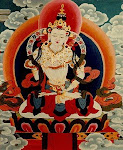Kaibigan,
We were asked to choose a picture from the the Cartier Bresson exhibit in MoMa. I chose the picture of a boy going down a Parisian street cradling two big bottles of wine on each hand. We were told that the chosen picture is the second scene from a play in our head.
This is what I wrote:
Juliette
Scene 1
This is Juliette’s third summer in Avignon. She has nearly forgotten why she had escaped here. Sometimes, she resents the amnesia.
Her French has improved enough to banter with the grocer after the baguettes and cheese have been tallied up. It’s always about the prices and how her hair is a lovely shade of brown. Shall she accept Pierre’s invitation to go to the Arles to see the house where Van Gogh cut off his ear.
The boy has gotten away.
Scene 2
Scene 3
The following day, there is a commotion in the large plaza by the way to the old Pope's castle. Juliette is drawn to the scene. She uses her limp to get people to give way. She finds herself at the front of the crowd that has gathered in a circle.
Scene 4
Scene 5
Juliette is lying down, her feet up in stirrups. A doctor is trying to scrape out something from within her. She feels that this is what she wants. But she also feels that in the middle of the procedure she has changed her mind. But the person scraping her doesn’t seem to understand. She talks and it is garbled. She knows she is speaking French but it sounds different. Her speech is slurred.
Something is coming out between her legs.
It is a someone.
It is slimy and fully formed. It is big and smiling.
It is the boy carrying the two bottles of olive oil.
She wakes up in a sweat. It is a dream.
Scene 6
She is by her phone. She calls long distance. She talks to her husband.
It is an answering machine.
She confesses to the machine what she did to their baby. And why she did it.The husband suddenly answers the phone in the middle of her confession. He asks her where she is.
She is speechless. She speaks in bad French. She pretends to be another woman.
She hangs up.












